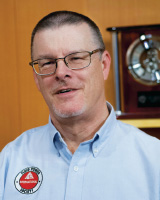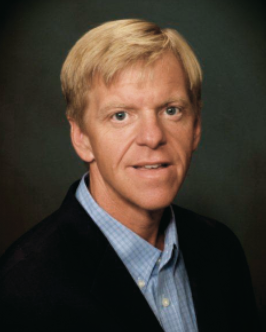A Variation on Electrohydraulics
 By Craig Lukomski, Product Market Manager, Simulation and Test, Moog
By Craig Lukomski, Product Market Manager, Simulation and Test, Moog
These days, motion-control technology discussions with customers go in three directions: traditional hydraulic actuation, all-electric motion systems, and hybrid solutions. To dispel the notion that this article lobbies for one of these solutions over another, my employer offers and recommends all three. The best technology is the one that delivers what a customer needs.
Regardless of the type of actuator one selects, there is a very large, established infrastructure for hydraulic technology, which converts energy into motion to move and control machines. Research provider MarketsandMarkets estimates the global actuator market will reach $86.6 billion by 2027. According to global market research firm Technavio, “The global hydraulic actuators market is set to grow by $426.6 million between 2020 and 2025.” By some estimates, traditional hydraulics commands more than 75% of the motion-control market. Applications for testing an automobile’s or aircraft’s structure (or powering mobile machinery) rely on hydraulic-powered actuation because it’s effective at achieving a high density of energy (e.g., 3,000 lbs. per square inch for industrial applications).
A growing trend, however, is designing and building fully electric machines. The market for all-electric actuation is dominated by robots for applications including spot welding, moving parts, drilling, and painting. Technavio’s researchers noted last year that “the electric actuators market has the potential to grow by $3.96 billion during 2021 through 2025.” Researchers say that growth will come from industries including automotive, water and wastewater treatment, and aerospace and defense. In mobile markets, the proponents of electric actuation aim to convert traditional hydraulic-powered machines – which run off gas or diesel motors to generate hydraulic pressure and turn that into linear or rotational movement – into units with all-electric actuation. With fully electric actuation, a machine only consumes power when the application requires it; however, the unit may not have the equivalent energy density of its all-hydraulic counterpart. The all-electric motion-control solutions still require an onboard power plant and some way to create electricity, whether that’s a diesel engine or a big battery.
A third option: hybrid actuation
Along with hydraulic and electric actuation, there’s a third choice: electrohydraulic actuation. With a conventional electrohydraulic actuator, the actuator gets hydraulic power from an induction motor-driven pump and controls that power through a servovalve to direct the output piston. A variation on electrohydraulic actuation is an electrohydrostatic actuation system, or EAS. With EAS, a machine designer has a system converting electric power at the point of demand. Power on demand means a brushless DC servomotor and connected pump only draw power when the system requires it. EAS is different from a centralized system that constantly produces power and burns off what’s unused as heat. EAS allows machine builders to reduce the size of an actuator’s power system and eliminate the wasted heat. When the electric motor controls the modulating speed and direction of the EAS, the application eliminates the standby or excess power that does not pass through a servovalve, which regulates a traditional hydraulic actuator. That loss is around one-third of the supplied power at the actuator’s peak output. With EAS, a machine builder or owner can leverage the energy density of a hydraulic solution with the on-demand cost savings from all-electric machines. Think about a traditional hydraulic pump, which runs continually. Practically speaking, the machine only needs hydraulic pressure a portion of the time, which is when it’s working. In a traditional hydraulic design, that constant stream of energy directed to the pump isn’t the most efficient solution. With a conventional piece of construction equipment, like a loader, the vehicle’s diesel engine constantly runs to keep the hydraulic pump pressurized.
Some machine builders and operators see a sweet spot where they can achieve the energy density of hydraulic actuation with electric power. There’s an attractiveness to power on demand wherein a machine builder can combine a servomotor with a pump and actuator (i.e., with a manifold to incorporate various safety controls) in one system, blending hydraulics and electricity. These customers have worked with purely hydraulic motion-control systems, and they understand the tradeoffs between the energy consumption of hydraulic actuation and force limitations of electric actuation. They may not be ready to move to a fully electric system. Or they don’t want to abandon their hydraulic system, which would upend their ability to service a fleet of machines. Instead, they see some advantage in a hybrid solution, using an electrically driven pump to move hydraulic fluid on demand.
There’s a case to be made for any one of these methods of actuation. Machine builders have successfully used traditional hydraulic units to generate flow and create pressure for steelmaking applications, plastics injection molding, and various test applications. With electric actuators and motors, makers of compact construction equipment, for example, are successfully turning these formerly all-hydraulic machines into greener vehicles that control tilt, turns, and traction. The cost of energy will impact the direction in which the market goes, of course. But ultimately, customers and machine makers will take the market toward the greatest usability, sustainability, and profits. λ







